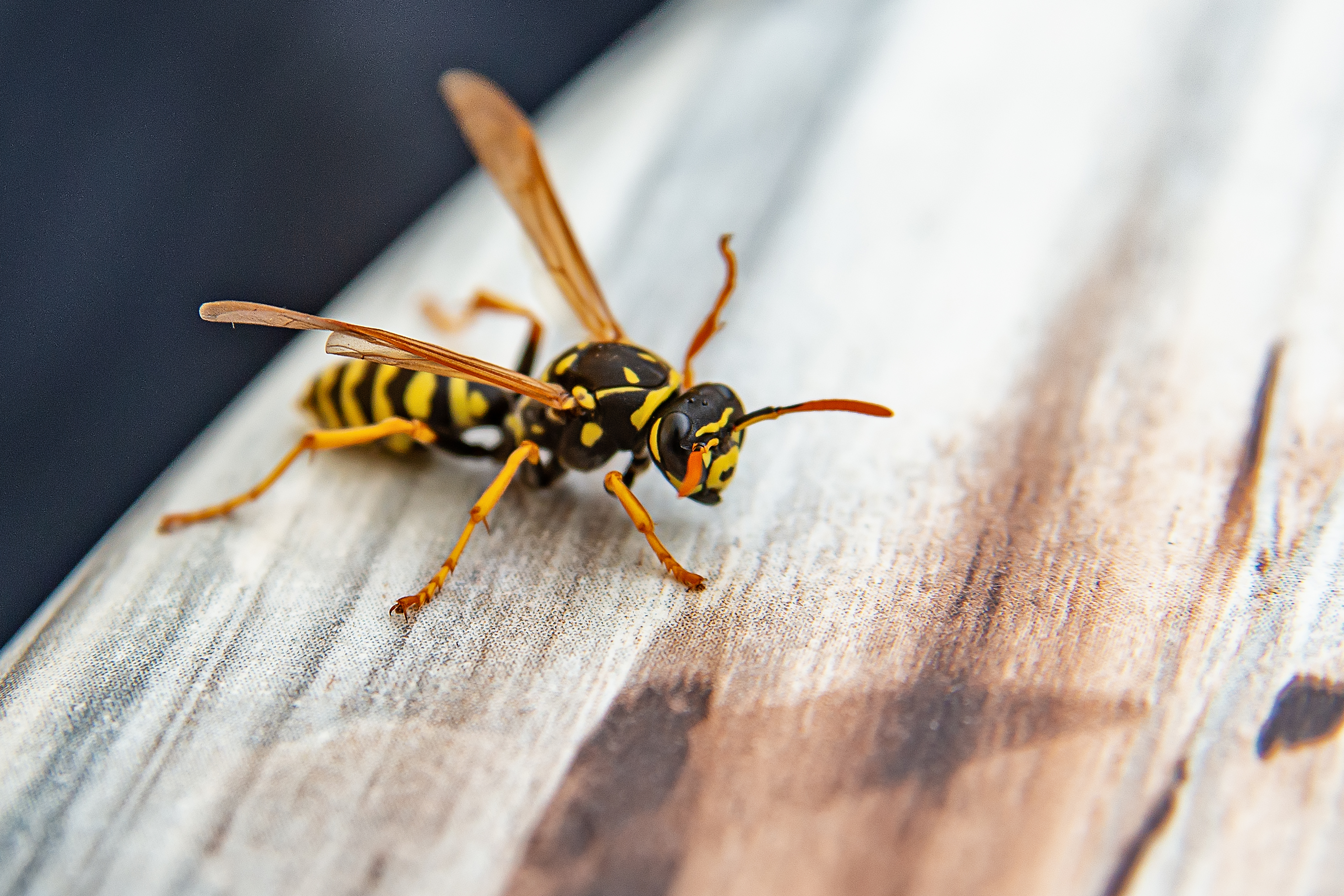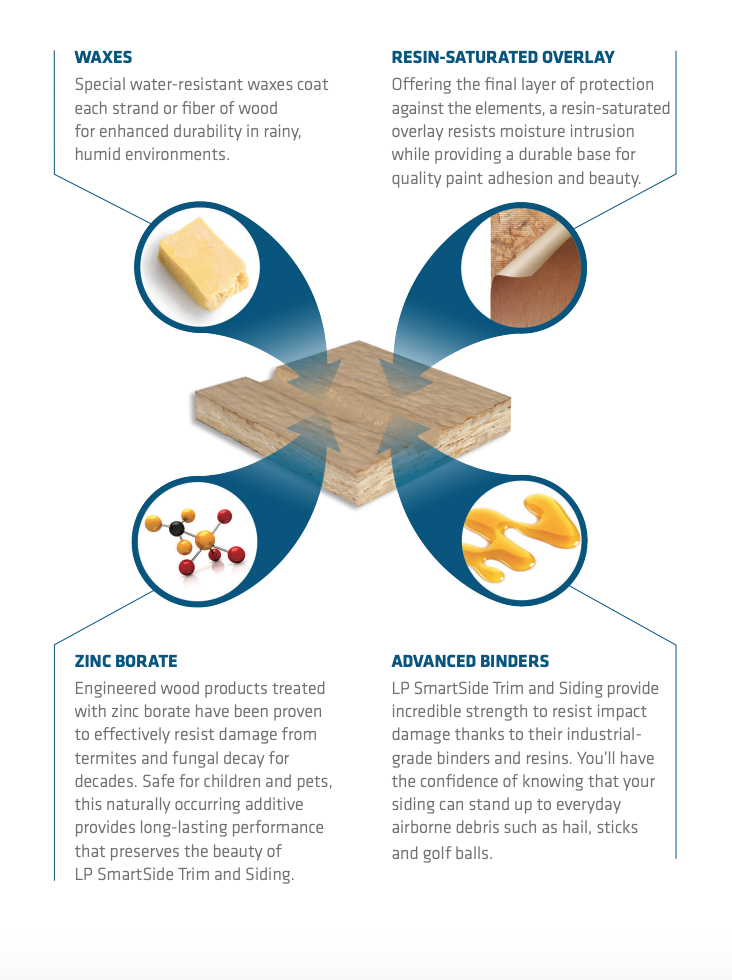News & Stories5 min
Bugs vs. Siding: How to Spot and Prevent Damage
Bugs in wood siding, whether behind engineered wood siding or in traditional wood products, aren't just troublesome for homeowners-building professionals must deal with them on the jobsite, during renovations, and as they plan their builds. When clients turn to you for guidance on removing insects, replacing siding or ensuring their new durable siding is protected against bugs, it's important to know how to address these issues.
Let’s examine the different types of bugs you may deal with and check in with Isaac Ojeda, Construction Service Associate at LP Building Solutions, for tips on how to prevent bugs from getting in or behind your durable siding.
Types of Bugs That Get Under Siding

"There are a lot of variables," Ojeda mentions, when it comes to bugs under siding. "Weather, humidity and moisture all play a part, and it depends on the area of the country." He also points out that insects can collect behind durable wood siding. Here are a few common bugs that can cause problems:
Wasps
Wasps are very common, especially during the summer months. Gaps in siding offer perfect spaces for wasps to enter the building envelope and start building a hive from chewed wood fibers.
Yellow Jackets
Yellow jackets can use siding to keep warm and survive past summer months. They're a common concern in northern temperate climates and can also get behind siding through gaps.
Carpenter Bees
Per their name carpenter bees have the ability to bore into wood, typically entering the material from the underside of wood surfaces like siding, soffit, overhangs, fascia and more.
Hornets
Hornets chew wood to make a nest-building pulp material. They tend to build under eaves or protected spaces, and they can be found inside wall voids. These hard-to-reach areas provide shelter and usually occur near food sources.
Termites
Termites can be particularly devastating, especially since they can cause damage that isn’t immediately apparent. Because they consume plant-based materials, including wood, all homes can provide food for termites. Warning signs include mud tubes on exterior walls, discarded wings, cracked or bubbling paint, and wood that sounds hollow when tapped.
Paper Wasps
Paper wasps get their name from the material they use to make nests and what their nests look like. These nests appear in springtime and tend to be found under soffit, eaves, windows and door frames.
Preparing for and Preventing Bug Damage to Siding
According to Ojeda, proper durable siding installation is critical to prevent damage from bugs. However, it's also important to set up reasonable expectations with homeowners. "Set the expectation that there's a possibility that insects will get behind the siding," he says. A reasonable number of bugs is expected, but infestation and damage can be avoided.
"Make sure that all gaps are sealed according to the manufacturer's instructions," Ojeda says. "If the joints are properly sealed using sealant, a joint covering or pan flashing, that can help reduce insects." Ojeda also points out that lap siding creates more voids due to overlapping courses. Panel siding may be a better choice for areas where bugs are a major concern, since it installs flat against the wall. However, a starter strip can be installed with lap siding to provide an additional line of defense against bugs getting behind siding at the bottom of the wall.
"Planning ahead is the biggest consideration," Ojeda advises. "Make sure you're taking bugs into account instead of having to go back and retrofit your siding." He identifies rain screen wall assemblies in particular as requiring preplanning. "When installing lap siding over furring strips, there is a void between the siding and the wall," Ojeda explains. For these installations, insect screens at the bottom of the wall should be considered.
Examining Siding for Damage From Bugs
"Visually inspect the siding, and make sure there isn't any give when you touch it," Ojeda suggests. If any deterioration is detected, it would be time to replace the siding. However, if the infestation is significant, a professional pest control company should get involved to assess the damage and see what options are available for remedying the issue.
Once the bugs are taken care of, you can assist the client with best next steps for replacing or repairing their siding. That's where one of the most durable siding solutions available comes in.
LP® SmartSide® Siding vs. Bugs

LP SmartSide Trim & Siding is manufactured with specific defenses against bugs, including termites. “Zinc borate is one of the main reasons LP SmartSide siding resists insects,” Ojeda says. “It’s the main component in our siding that functions in that role.” A naturally derived additive, zinc borate also helps resist fungal decay. Especially with traditional untreated products like cedar siding, bugs in wood siding can cause major damage—but treated engineered wood has protection built into every strand. With LP SmartSide products, it’s more than a topical application of a bug-resistant spray or coating—it’s protection at the strand level.
LP SmartSide Trim & Siding is also built for strength, which helps protect against the elements and makes it one of the most durable siding solutions on the market today. LP’s proprietary SmartGuard® process makes the entire product strong and durable enough to resist many pests that may come its way.
Check out our trim and siding products to explore our variety of timeless, durable LP SmartSide product offerings.
Continue Reading
Resiliency Solutions
5 minIntroducing LP® SmartSide® ExpertFinish® Naturals Collection™: Nature-Inspired Beauty Meets Engineered Performance
We’re excited to introduce the LP® SmartSide® ExpertFinish® Naturals Collection™, a bold new addition to our trusted line of engineered wood siding and trim that delivers the warmth and beauty of nature with the advanced protection and performance builders and homeowners expect.
Labor Solutions
5 minChoosing the Right LP® Structural Solutions Product for Your Build
When it comes to building strong, reliable, and high-performing structures, the materials you choose matter. At LP Building Solutions, we understand that every project, whether it's a single-family home or a multifamily development, requires structural components that meet your needs for strength, durability, and efficiency.
Sustainability Solutions
5 minBuilding a More Sustainable Future with LP Building Solutions
In today's world, sustainability is no longer just a buzzword, it's a blueprint for responsible living and smarter building. As the construction industry seeks ways to reduce its environmental footprint, LP Building Solutions is focused on providing innovative building materials for eco-conscious builders to help reshape what it means to build sustainably
News & Stories3 min
History of Partnership with Gary Sinise Foundation
The LP Foundation is a proud partner of the Gary Sinise Foundation, which supports wounded veterans in several ways. You can learn more about the LP Foundation here.